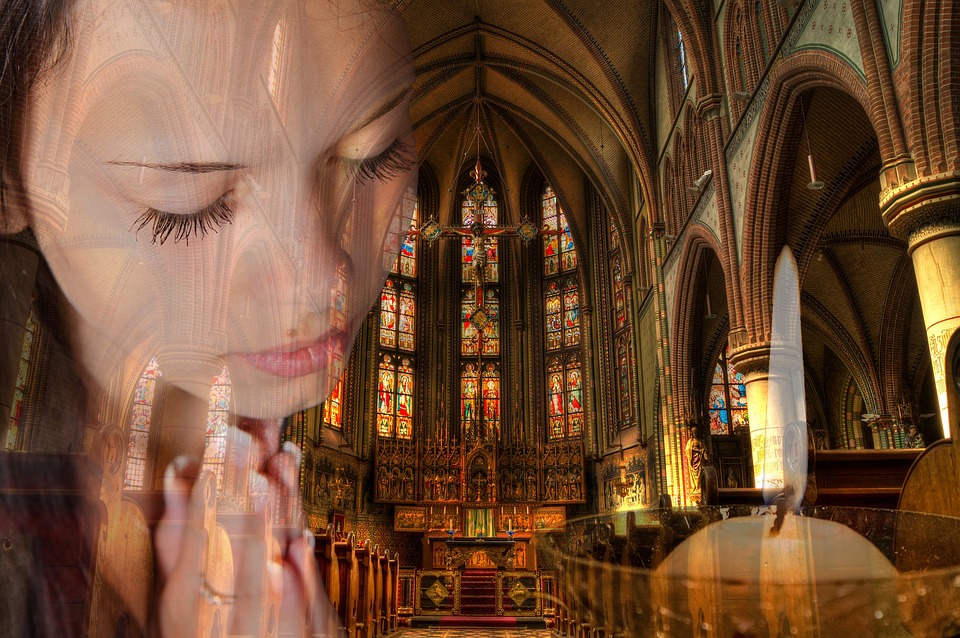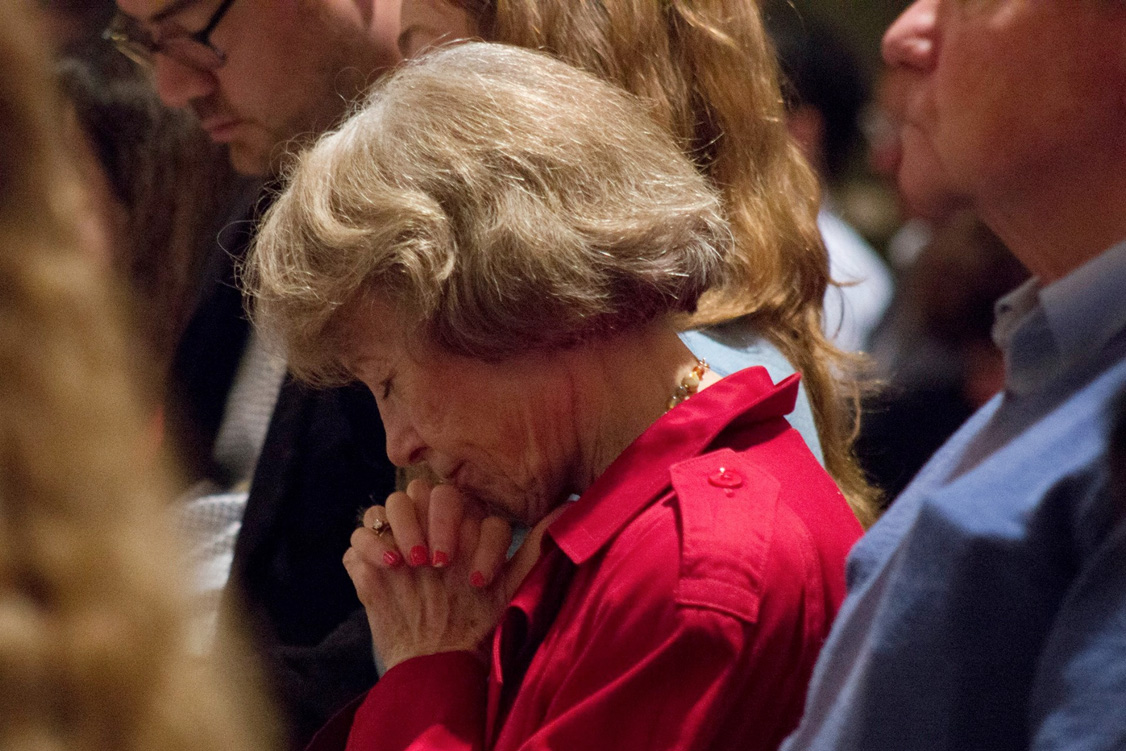 We live in times when many trivialize God or at least reduce Him to someone who can be managed and understood. God the Father has become more of a grandfather or a philosopher king than the Ancient of Days, dwelling in unapproachable light, surrounded in angelic praise and with fire going out before Him. Similarly, the Holy Spirit is just a quiet dove or a gentle force rather than the rushing wind and tongues of fire that stirred the early Church. Finally, Jesus is reduced to the laid back, harmless hippie talking about flowers and birds, or some social reformer who just “cares” for people rather one who challenges them and insists they accept His truths.
We live in times when many trivialize God or at least reduce Him to someone who can be managed and understood. God the Father has become more of a grandfather or a philosopher king than the Ancient of Days, dwelling in unapproachable light, surrounded in angelic praise and with fire going out before Him. Similarly, the Holy Spirit is just a quiet dove or a gentle force rather than the rushing wind and tongues of fire that stirred the early Church. Finally, Jesus is reduced to the laid back, harmless hippie talking about flowers and birds, or some social reformer who just “cares” for people rather one who challenges them and insists they accept His truths.
Even before His resurrection and ascension, Jesus was no pushover to those who really encountered Him: demons trembled before Him, religious leaders feared Him with an almost apoplectic reaction, people fell to their knees in front of Him, and His own apostles were described by Mark as amazed and afraid (Mk 10:32). Jesus’ words and answers left the crowds spellbound and even His enemies were afraid to ask Him any more questions.
The reworked Jesus of our dainty times bears little resemblance to the Jesus of Scripture, even before His glorification in the resurrection and ascension; after His ascension Jesus’ glory is beyond description. Even John, who likely knew His gentleness better than anyone, fell to his feet when he encountered the glorified Christ of Heaven:
On the Lord’s day I was in the Spirit, and I heard behind me a loud voice like a trumpet, saying, “Write in a scroll what you see and send it to the seven churches: to Ephesus, Smyrna, Pergamum, Thyatira, Sardis, Philadelphia, and Laodicea.” Then I turned to see the voice that was speaking with me. And having turned, I saw seven golden lampstands, and among the lampstands was One like the Son of Man, dressed in a long robe, with a golden sash around His chest. The hair of His head was white like wool, as white as snow, and His eyes were like a blazing fire. His feet were like polished bronze refined in a furnace, and His voice was like the roar of many waters. He held in His right hand seven stars, and a sharp double-edged sword came from His mouth. His face was like the sun shining at its brightest. When I saw Him, I fell at His feet like a dead man (Rev 1:10-17).
Jesus seeks to reassure John, but He does not do so by offering him the ancient equivalent of a “high five.” Rather, He speaks out of His glory and to the assurance and obedience that glory should inspire:
But He placed His right hand on me and said, “Do not be afraid. I am the First and the Last, the Living One. I was dead, and behold, now I am alive forever and ever! And I hold the keys of Death and of Hades. Therefore, write down the things you have seen, and the things that are, and the things that will happen after this (Rev. 1:18-19).
For all of us, a balance must be found between a cringing fear and the widespread trivializing of the Lord that has taken place in our times. Jesus is the ruler of the Kings of this earth, the Great I AM, and Lord of all, and he loves us and has died for us. All of this should inspire a deep love for him and a reverential spirit that is both docile and grateful.
In his book Humility Rules, Fr. Augustine Wetta, O.S.B. writes,
I was visiting a church not long ago when I noticed a boy in line for Communion wearing a t-shirt that read “Jesus is my homeboy.” I guess I can see how that might help … when it comes to rediscovering one’s dignity as a brother of Christ; but remember, Jesus is also our King. If you don’t find his divine power a little intimidating, there is probably something wrong with you. … We should not be in the habit of thinking that Jesus would be grateful for our friendship. We should love him, but we should also be in awe of him. Don’t get me wrong, our ultimate objective is to discover the perfect love that “casts out all fear” (1 John 4:18), but be careful you don’t wind up sliding into a comfortable familiarity that drives out all respect … fear and love must go together (Humility Rules, pp 32-34).
Amen!
Liturgically in the last fifty years we have also reflected and reinforced a casual and overly familiar relationship with God. People used to dress up for church, keep a reverent silence prior to Mass, and be more serious about the state of their soul before approaching Holy Communion. Today, much of this is gone. Today many people dress casually at Mass, barely reflect on their worthiness to receive Communion, and seem more focused on the human dimension of the liturgy. Beginning in the 1960s the emphasis was on the Mass as a meal and so it should look and be like one. Thus, altars were turned around and made to look like tables (frankly not nearly as nice as my mother’s dining room table), and sacrificial language was lost. It also seemed a rather casual meal at that. The chalices were gone, replaced by pottery and ceramic vessels; the hosts got bigger and more “pita-like.”
Much of this was based on a mistaken notion that the Mass is a representation or reenactment of the Last Supper—it is not. It is the making present of the passion, death, and resurrection of Christ. Even at the Last Supper, Christ pointed beyond it, to the cross and resurrection. And even if the Last Supper is recalled, we ought to remember that the Passover meal (the context for the Last Supper) was no casual affair. Only the best was used; formality and ancient customs prevailed for this night that was different from every other night.
Slowly we are (and must continue) regaining in the liturgy an appropriate formality that reflects the respect and reverence we should have for the Lord. Dennis McNamara, in his book Catholic Church Architecture and the Spirit of the Liturgy, reminds us,
Liturgical imagery must rise above both the saccharine, porcelain-doll portraits of the 19th century holy cards and the hyper-realistic and overly optimistic imagery of Christ as a chummy first century Mediterranean blessing our children [and hugging us on judgment day] ….
The Liturgical Christ is Sovereign Mediator between God and man, the eternal High Priest, the divine Teacher, the judge of the living and the dead, caught up into the light of eternity, and [beyond] time and space. The Liturgical Christ cannot be domesticated (p. 75).
Yes, He is the great High Priest, judge of the world, and the Lord who is to come. He enters our assembly and walks the aisle as we sing a hymn of praise to Him. He teaches in the liturgy with authority and we stand in respect as His Gospel is announced. He dons priestly robes and enters on our behalf into the Holy of Holies in Heaven and we rightly fall to our knees. Scripture says, Let all the angels of God worship him (Heb 1:6). Scripture also asks, [T]o which of the angels did God ever say, “You are my Son, this day I have begotten you”? (Heb 1:5)
There is too little of this appreciation in our modern liturgies. I do not claim that the only remedy is to use more ancient forms. There are modern forms that can and do capture the glory of God. Gospel music, for example, emphasizes a high Christology and a Christ who can do anything but fail, who can make a way out of no way, and of whose goodness “I cannot tell it all.” A modern Christian song by Hillsong speaks of the Lord as King over the storm, in whom I will be still and know that He is God. The more ancient forms have much to teach us as well, for they strongly emphasize the otherness of God and a reverential stance and silence before Him. He is above the latest trends and ephemeral issues.
To a domesticated notion of God, I can only cry, “May reverence, wonder, and awe be a gift to us in abundance!”
To him who loves us and has freed us from our sins by his blood and made us a kingdom, priests to his God and Father, to him be glory and dominion forever and ever. Amen. Behold, he is coming with the clouds, and every eye will see him, even those who pierced him, and all tribes of the earth will wail on account of him. Even so. Amen (Rev 1:5-7).









